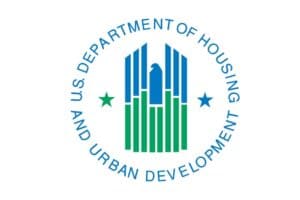News

IRS Guidance to HUD on Average Income AMI Calculations
The Internal Revenue Service (IRS) released Revenue Ruling 2020-04, which clarifies the manner to properly compute the 70 and 80 percent income limits applicable to the LIHTC under Section 42 of the Internal Revenue Code. The 70 percent limit is 140 percent or less of the income limit for a very low-income family of the same size and the 80 percent limited is 160 percent or less of the income limit for a very low-income family of the same size.

FHA Posts 2020 MAP Guide Appendix 16 For Review
The Federal Housing Administration (FHA) posted a draft of Appendix 16 on Organizational Chart for Lease Structure of its 2020 Multifamily Accelerated Processing (MAP) Guide. To provide feedback, respondents must use the 2019 Draft MAP Guide Response Worksheet and e-mail the response worksheet to HSNG_MF_2019MAPGuide-DraftingSuggestions@hud.gov by February 12.

President Trump Mentions Opportunity Zones During SOTU
During the 2020 State of the Union (SOTU) address to a joint session of Congress President Donald J. Trump said the following on Opportunity Zones, “Jobs and investments are pouring into 9,000 previously neglected neighborhoods thanks to Opportunity Zones, a plan spearheaded by Senator Tim Scott (R-SC) as part of our great Republican tax cuts.”

Atlanta Launches Affordable Housing Fund
Some of Atlanta’s most seasoned real estate leaders have joined to launch the Atlanta Affordable Housing Fund, LP, a social impact fund designed to provide low interest rate financing for affordable housing projects. The $25 million fund will deploy low-cost capital to qualified developers and sponsors, which is estimated to provide financing to create and/or preserve up to 1,500 affordable housing units.

Oregon Housing Stability Council – February 7
Oregon Housing and Community Services (OHCS) will hold a Housing Stability Council meeting on Friday, February 7, 2020 from 9:00 am to 2:00 pm PT. Attendees can participate in person at OHCS (725 Summer St. NE, Salem, OR) in conference room 124 A/B or via phone: 1-877-273-4202; Participant Code: 4978330. The meeting materials packet is […]

West Virginia Hosts LIHTC Application Workshop on March 24
The West Virginia Housing Development Fund (the Fund) will host a 2020 LIHTC Application Workshop on March 24, 2020, at the Holiday Inn & Suites, South Charleston, WV.

Texas Revises 2020 Multifamily Uniform Application
Texas’ 2020 Multifamily Uniform Application posted on January 22, 2020, has been revised to correct Tab 48, the tie-breaker information worksheet. The revision only affects competitive nine percent LIHTC applications.

Minnesota Hosts Housing and Service Resources Information Session
The Minnesota Department of Human Services (DHS) staff will provide an overview of Housing Support and how this resource works for housing developments with supportive housing units on February 26 from 10:00 am to 12:00 pm CT. This session is designed for developers, property management staff and service partners interested in learning more about Housing Support and additional DHS resources for supportive housing

Louisiana Publishes PRIME NOFA Program Documents
The Louisiana Housing Corporation published the following documents for its Piggyback Resilience Initiative-Mixed Income (PRIME) Notice of Funding Availability (NOFA)

Applications for Louisiana’s Neighborhood Landlord Rental Program II Due January 31
The Louisiana Housing Corporation (LHC) is accepting applications for its Neighborhood Landlord Rental Program Phase II (NLRP2 Initiative) through 4:30 pm CT on January 31. All written inquiries must be submitted to nlrp@lhc.la.gov.

Kentucky Releases Draft 2021-2022 QAP
The Kentucky Housing Corporation (KHC) released its draft 2021-2022 QAP and draft 2021-2022 multifamily guidelines for review. Comments are due by February 24. KHC will host a public hearing on February 17 to review the draft QAP and multifamily guidelines.

Kansas Releases 2019 Annual Report
The Kansas Housing Resources Corporation released its 2019 Annual Report. Kansas leveraged $97.1 million for investment in rental housing, served 21,436 Kansans through community services, sheltered 1,878 Kansans, weatherized 996 homes and installed 9,639 LED light bulbs.